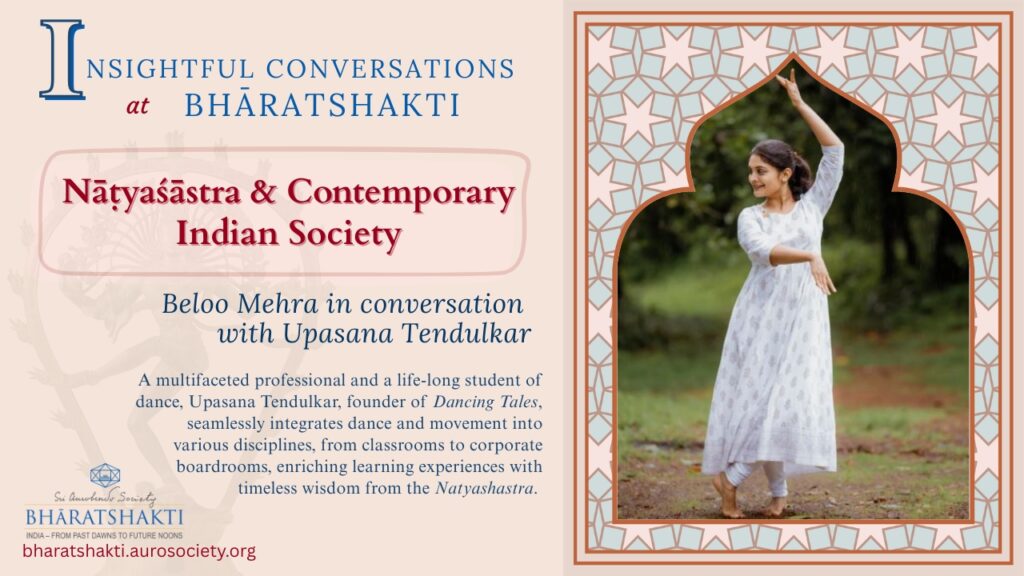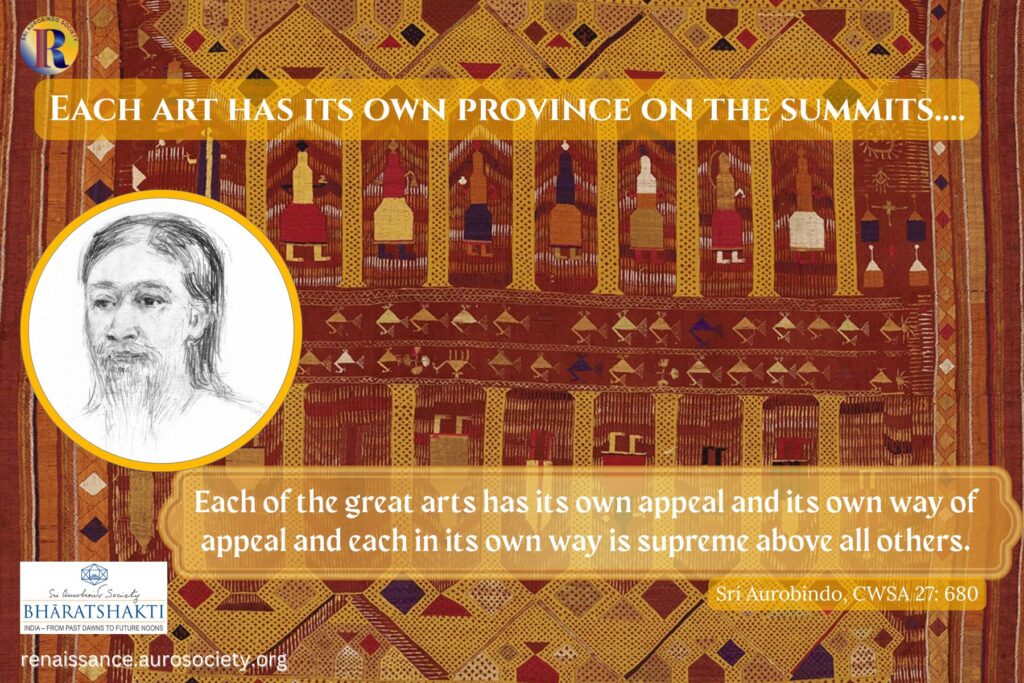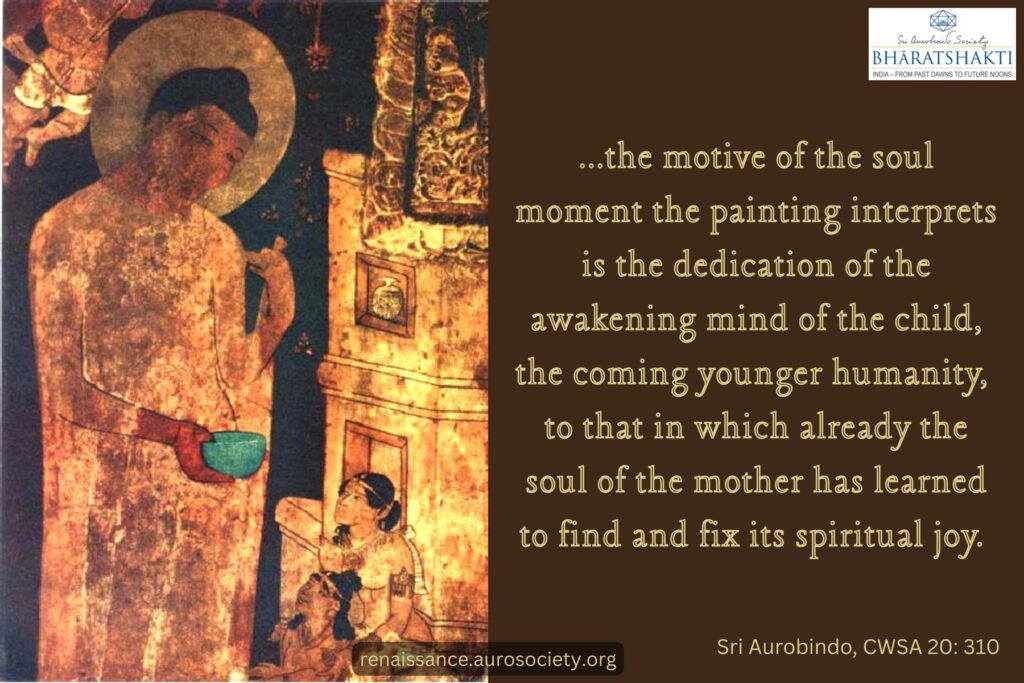Volume V, Issue 10
Author: Jishnu Guha
Editor’s Note: In this sweeping look at the history of Art in India, the author emphasizes the ‘sacred’ and the ‘spiritual’ foundation of all artistic creation in India. Part 1 focuses primarily on a brief history of sculptural art in India. Part 2 which deals with Indian painting will be featured in a future issue.

Through all the evolutionary stages of the Indian religio-spiritual culture, what has stayed consistent is the greater importance given to authentic experience over the scriptures. The fundamental Vedic truth – One truth called by different names — has been the cornerstone of all spiritual and religious movements which emerged from within the Sanatana Dharma fold. The Indian mind has been suffused by the millennia of spiritual experience and vision which form the essential foundation of our culture. And over the course of time, it has also been shaped by the assimilation and inclusion of different influences, shocks and impacts. Indian art is a product of such Mind.
The seals found in the Indus Saraswati Valley (3300- 1300 BCE) can be seen as the earliest forms of Indian designs, apart from per-historic cave paintings. In these seals we easily recognize some symbols which continue to live and carry great significance to this day and age.
- Swastika signifying the forward movement of Sun, or the progress.
- The Peepal Tree Leaf – all the Indian religions to this day consider this tree sacred.
- The Pashupati seal shows Lord Pashupati, the one who has conquered or mastered all the animal-nature, seated in Padmasana, with a bull on the side. This image is understood to represent Lord Shiva and Nandi. (The image of bull is also representative of the Vedic image of Purusha).
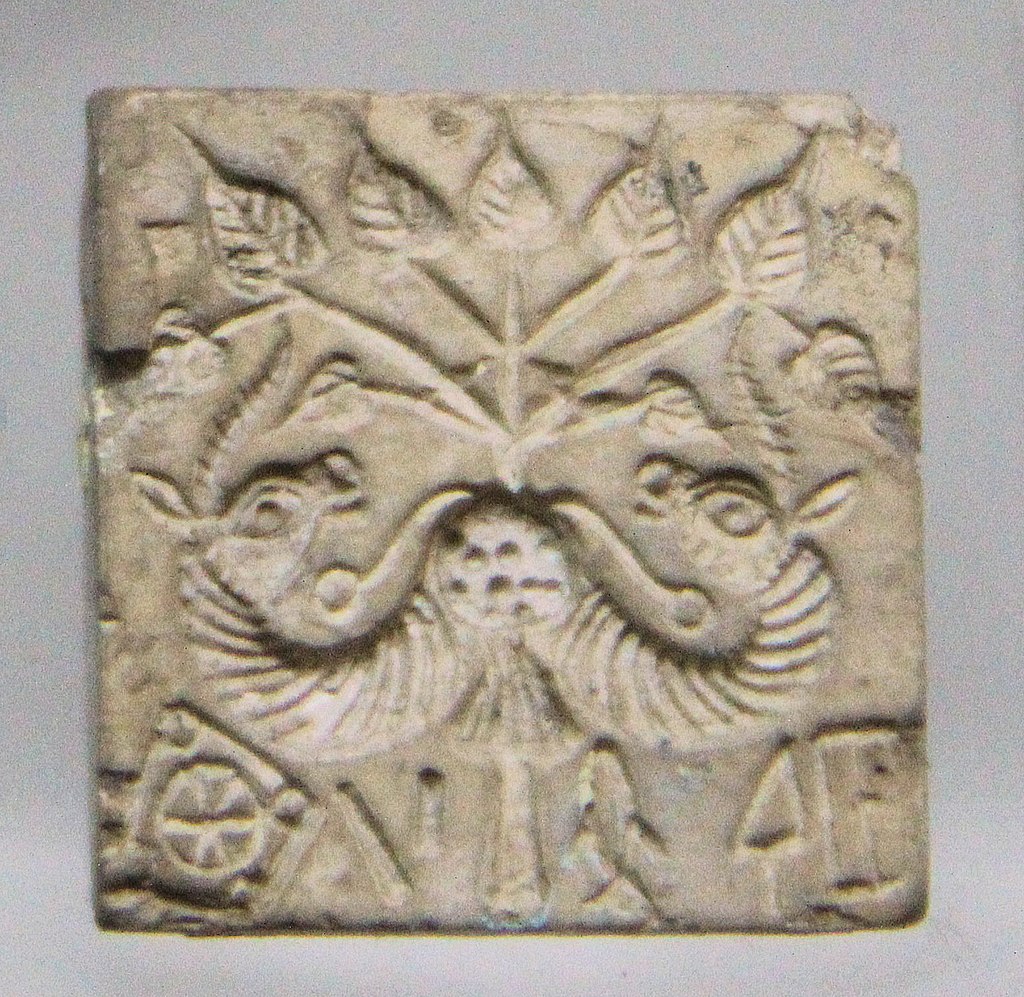
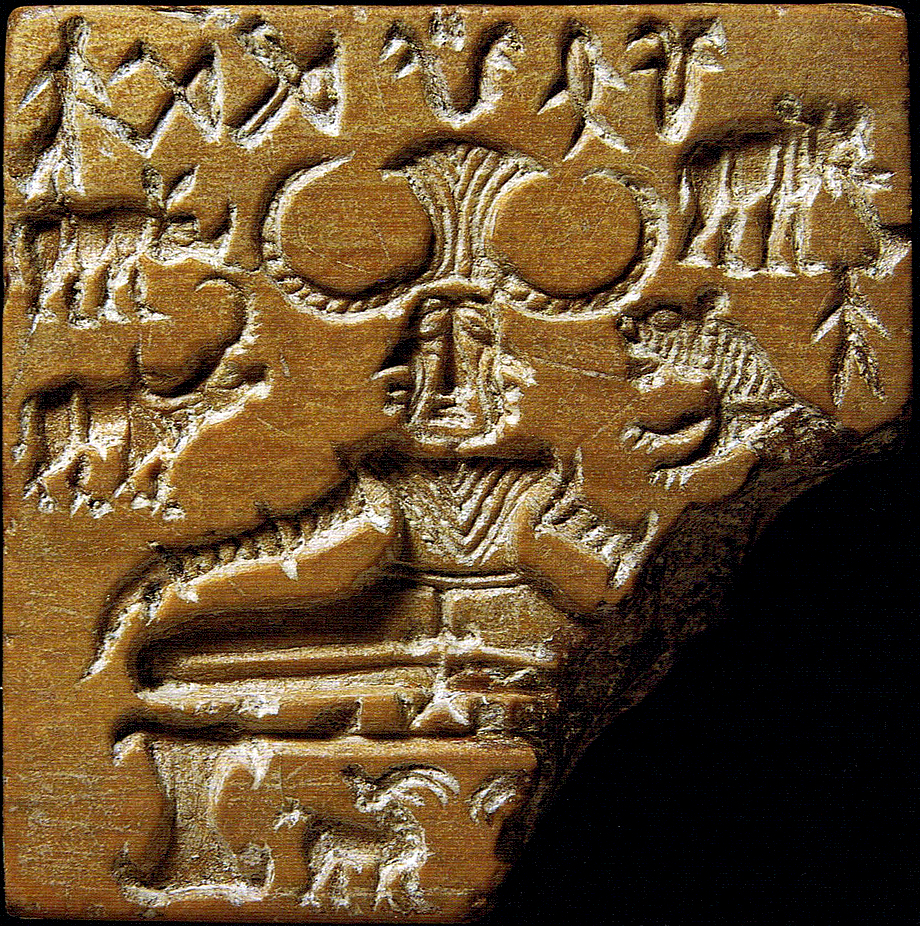
Among the other earliest examples of Indian art are the sculptures dated to 2nd-3rd century BCE, in Bharhut, Madhya Pradesh. There must have been art prior to this era but done on wood or textile; that has not survived. Continuing with the Vedic practices, the earlier representations of Buddha were also through a symbol and not as a human figure. The Stupa railings have scenes from Buddha’s life.
The practice of building grand stupas which housed the sacred relics was followed by both the Buddhists and Jains. Perhaps the concept was reminiscent of the ancient idea of burial memorials that predated the Buddhist era. The pilgrims circumambulate around the sacred stupa, a ritual representing the forward movement of sun — a practice prevalent to this day signifying the continuity of Indian tradition. The Buddhist structures flourished under the patronage of King Ashoka (268-232 BCE).
The railings and gateways of Bharhut stupa were also inspired from the decorated wooden posts made during the Vedic yajñas.
(Image: Gaja Lakshmi from Bahrut Railing; source: wikicommons)

Gradually in the era of the Kushan Kings, who came from Central Asia, we begin to see examples of Gandhara art. It was a transitory phase when Indian Art was going through a process of assimilation of ideas and techniques. This school shows fusion with Greek ideas such as emphasis on external features. It is also from this time we begin to see Buddha in a human form. We see the Gandhara Buddhas with sharp nose and wavy hair fashioned in Greek Apollo style (circa 5th century CE). These were in sharp contrast to the calm meditating Buddha form which exuded softness and grace. The latter was prevalent in the Gupta period (319-540 CE), when the Indian art reached its maturity.
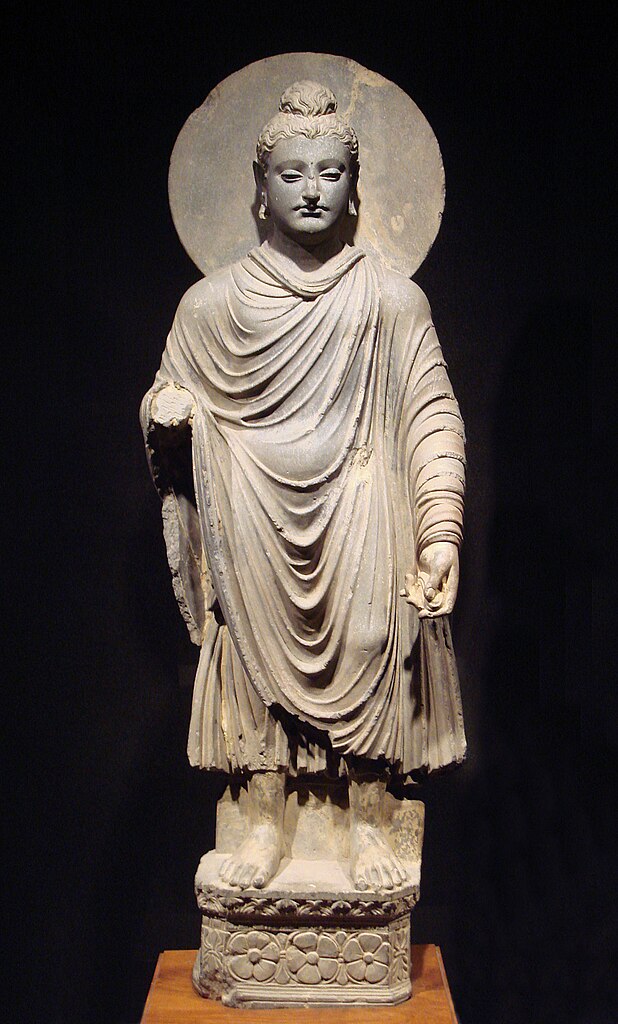
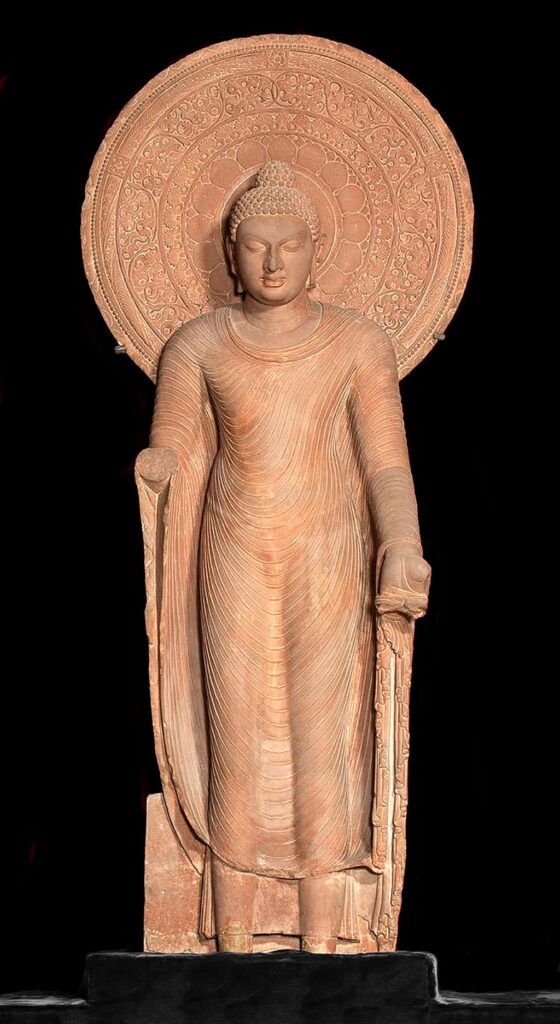
A Vast Knowledge Tradition
There was a systematization of the vast knowledge base and canonical practices for creating various forms of Art. And also developed a comprehensive system for passing on the skills and knowledge by the teacher to the disciples, primarily through apprenticeship. Some of the canonical texts which compiled the knowledge base have been discovered. A few were preserved through translations in Tibetan while many were lost to time.
It is evident from these works that the Indians had an integrative approach to the art. A separate limb of art was not studied exclusively; rather painting, image making, dancing, and music were viewed as a unified subject. The texts provide detailed guidelines about the techniques, poses, shapes and colours. They also lay down the broad overarching principles of accuracy of measurements, expression of feeling, representation of grace, resemblance with the subject, and the range of colours.
Special attention is given to create forms which exude Divine beauty and power. This is done through smooth body shapes, use of various mudras (hand gestures), special marks denoting the divinity, their pose and eyes (e.g. half-closed drooping eyes while standing to represent an inward turning of mind). The viewer was expected to grasp the spirit behind the form. For even to a lay Indian mind, it is the soul that inhabits the form.
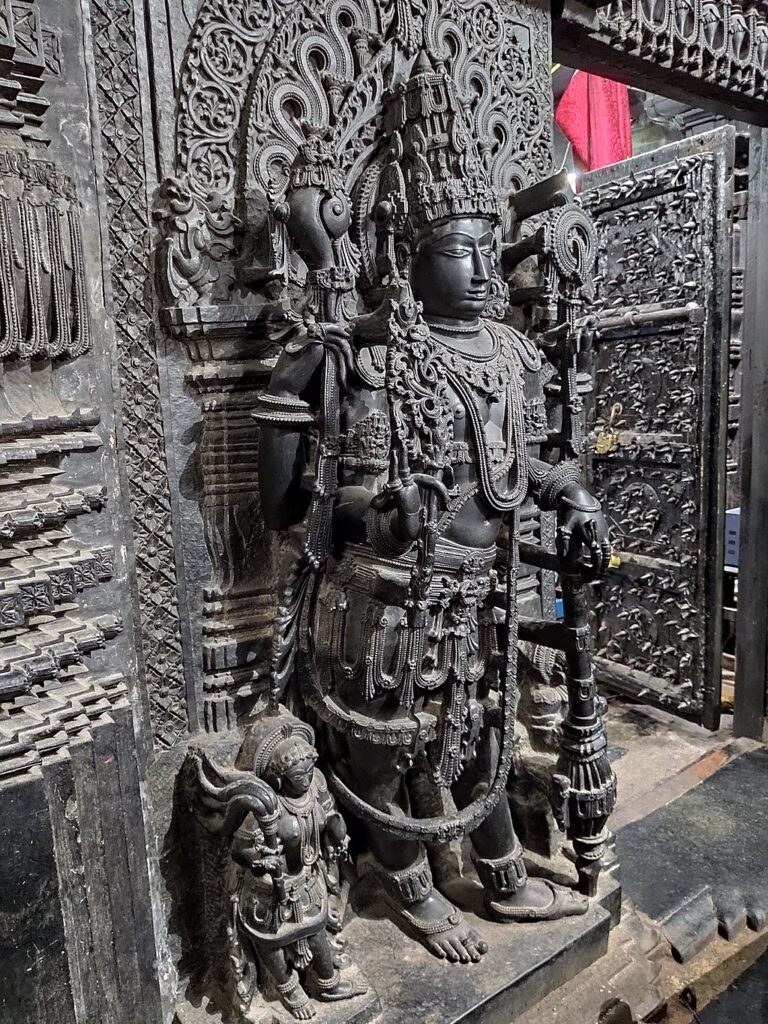
Also read:
The Spiritual Roots of Art in India
The Indian mind worships the Divine within the form. The form could be a simple dot or a stone, a tree or even a glaring fire, temporary mud idols which are dissolved away, or more enduring stone or metal murtis. The Indian worships the Divine in a multitude of forms as well as in formless. Indians have built grain size forms of the Divine and also large monoliths such as the one at Shravanabelagola.
All these ideas coexisted and still coexist in this land. And so has continued the variety of artistic expressions where with a vast range of skills the artists have created intricate images, and with simple outlines have represented the inner state.
Some outer forms and practices changed over time due to the impact of or as a reaction to the lack of religious freedom under Islamic rule, as well as the absorption of ascetic values from Buddhism and Jainism. But the spirit continues. While much of Indian landscape today is dotted with smaller temples or even a niche-in-the-wall shrines, the guilds of special architects and designers capable of building massive temple complexes and temple towers also thrive in various parts of India.
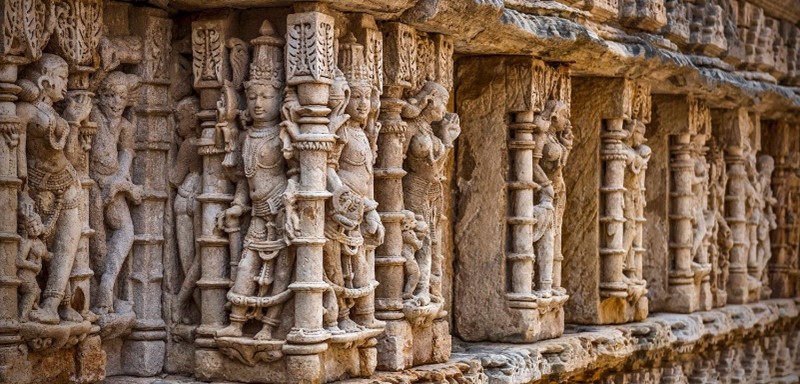
The structures such as palaces have not lived till the present day. This is primarily because they were destroyed and in many cases the materials were reused for construction. However, the 16th century palaces and forts in Rajasthan and exquisitely built stepwells in Gujarat (circa 10th -11th century) are living examples of Indian art. In such examples also, we find a reflection of the Indian mind steeped in spirituality.
It is important to note that the specimens of Indian art are not limited to India, or especially the current political boundaries of India. When we look across Sri Lanka, Cambodia, Indonesia, where the influence of Indian culture was strong, we find some of the finest examples of Indian Art preserved there. The principles of Indian art and artistic processes reached China, Korea, and Japan around 6th century CE through Buddhist missionaries. Detailed research works are available on the spiritual basis of Art in Asia.
WATCH:
The Spiritual Foundations of Art in Asia: A Talk by Dr. Shashibala

The Buddhist iconography survived in Nepal and Tibet after the destruction of Buddhist universities in 12th Century. Metal iconography was also advanced in India; the art reached great heights under the Cholas in Southern India. This age produced specimens in bronze and other metals which are nothing less than the meditative stone sculptures of the Gupta period. The grace, beauty and spirit of a Chola Bronze is still one-of-a-kind in the word.
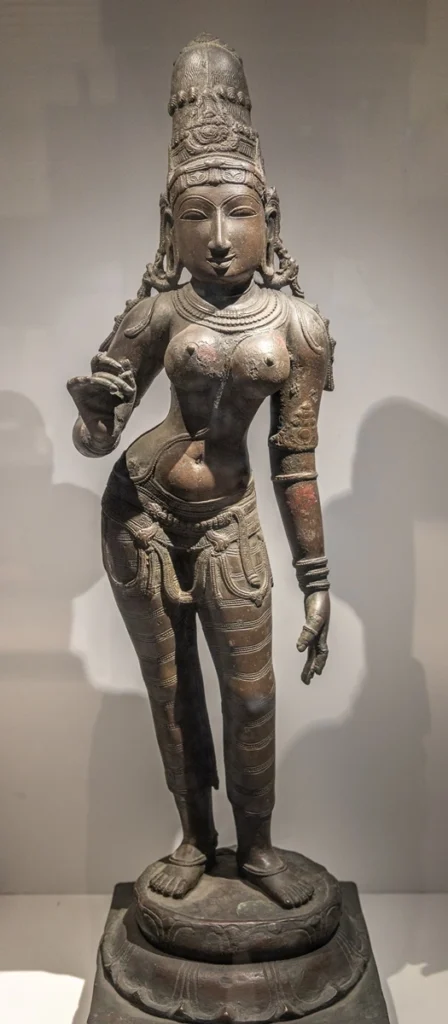
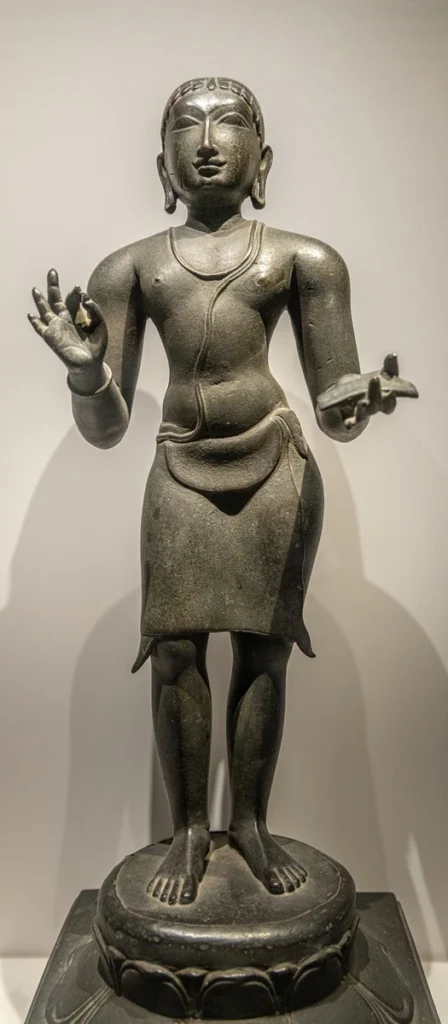
Manikkavachakar, Late Chola, 12th Century; source
TO BE CONTINUED…
ABOUT THE AUTHOR:
Jishnu Guha is a student of Integral Yoga, and takes a keen interest in Indian Art. He is a Chartered Accountant by profession and also holds an MBA degree. He volunteers his time toward preparing the newsletters of Sri Aurobindo Center, Los Angeles and also delivers talks for workshops organized by NAMAH, Pondicherry.
~ Design: Beloo Mehra

